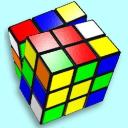Yahoo Answers is shutting down on May 4th, 2021 (Eastern Time) and beginning April 20th, 2021 (Eastern Time) the Yahoo Answers website will be in read-only mode. There will be no changes to other Yahoo properties or services, or your Yahoo account. You can find more information about the Yahoo Answers shutdown and how to download your data on this help page.
Trending News
How many terms are added in the arithmetic sequence –1, 1, 3, 5, ... if its partial sum is 80?
2 Answers
- PuzzlingLv 75 years ago
The arithmetic sequence starts with -1 with a common difference of 2.
The formula for the partial sums of an arithmetic sequence is:
Sn = n/2 * (2a + d(n-1))
Sn : sum of first n terms (80)
a : first term (-1)
d : common difference (2)
n : number of terms (unknown)
Plug everything in and solve for n:
80 = n/2 * (2(-1) + 2(n - 1))
80 = n/2 * (-2 + 2n - 2)
80 = n/2 * (2n - 4)
80 = n(n - 2)
80 = n² - 2n
n² - 2n - 80 = 0
Factor that:
(n - 10)(n + 8) = 0
Using the zero product rule:
n - 10 = 0
n = 10
or
n + 8 = 0
n = -8
We know we need a positive number of terms so we can eliminate -8 as an answer.
Let's double-check:
-1 + 1 + 3 + 5 + 7 + 9 + 11 + 13 + 15 + 17 = 80
Answer:
10 terms
- 5 years ago
I don't want to say. I f-cking hate your kind (whites), and I don't really feel like helping a white devil.



